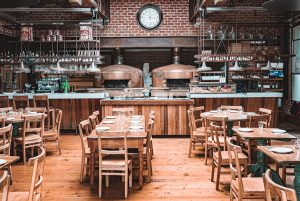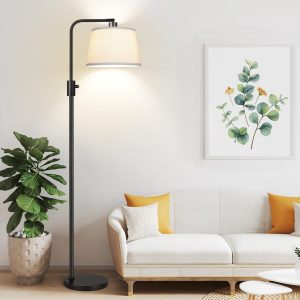
Creative Furniture Decoration Ideas for Your Home
Creative furniture decoration is an art form that transcends mere aesthetics; it is a means of self-expression and a reflection of personal style. In a world where mass-produced items dominate the market, the desire for unique and personalized spaces has led many individuals to explore innovative ways to enhance their living environments. Furniture serves as the backbone of any room, providing both functionality and character.
By embracing creative decoration techniques, one can transform ordinary pieces into extraordinary focal points that tell a story and evoke emotion. This journey into the realm of creative furniture decoration invites individuals to think outside the box, encouraging them to explore their imagination and discover new possibilities for their homes. The significance of creative furniture decoration extends beyond visual appeal; it also plays a crucial role in creating a harmonious atmosphere within a space.
A well-decorated room can influence mood, inspire creativity, and foster a sense of comfort and belonging. As people increasingly seek to curate their living spaces to reflect their personalities, the importance of thoughtful furniture decoration becomes even more pronounced. From upcycling old pieces to incorporating natural elements, the options for enhancing furniture are virtually limitless.
This article will delve into various techniques and ideas that can help individuals elevate their furniture decoration game, ultimately leading to more vibrant and inviting living spaces.
Upcycling and Repurposing Furniture
The Rise of Upcycling and Repurposing
Upcycling and repurposing furniture have become increasingly popular in recent years, driven by a growing awareness of sustainability and environmental responsibility. This creative approach involves taking old or discarded furniture and transforming it into something new and functional. Rather than contributing to landfill waste, individuals can breathe new life into forgotten pieces, turning them into unique treasures that serve a purpose in their homes.Resolvv
The Art of Upcycling
The process of upcycling often involves a combination of creativity, craftsmanship, and resourcefulness, allowing individuals to express their artistic vision while making environmentally conscious choices. The beauty of upcycling lies in its versatility; virtually any piece of furniture can be reimagined. For instance, an old wooden dresser can be transformed into a chic bathroom vanity with a fresh coat of paint and new hardware.
Endless Possibilities and Benefits
Similarly, vintage suitcases can be stacked to create an eclectic side table or used as storage solutions for blankets and books. The possibilities are endless, limited only by one’s imagination. Additionally, upcycling often encourages individuals to explore their DIY skills, fostering a sense of accomplishment and pride in their creations. By embracing this trend, not only do people contribute to a more sustainable future, but they also cultivate spaces that reflect their unique tastes and values.
Incorporating Natural Elements into Furniture
Incorporating natural elements into furniture design is an effective way to create a serene and inviting atmosphere within any space. Nature has an innate ability to evoke feelings of calmness and tranquility, making it an ideal source of inspiration for interior decoration. By integrating materials such as wood, stone, and plants into furniture pieces, individuals can establish a connection with the outdoors while enhancing the overall aesthetic of their homes.
For example, reclaimed wood tables not only add warmth and character but also tell a story of their past life, making them conversation starters in any room. Furthermore, the use of natural elements can extend beyond materials to include organic shapes and forms in furniture design. Curved lines and asymmetrical designs can mimic the fluidity found in nature, creating a harmonious balance within a space.
Incorporating live plants into furniture arrangements—such as using shelves or tables that feature built-in planters—can also bring life and vibrancy to interiors. This biophilic design approach not only beautifies spaces but also promotes well-being by improving air quality and fostering a sense of connection to nature. Ultimately, integrating natural elements into furniture decoration allows individuals to create environments that are both aesthetically pleasing and emotionally uplifting.
Using Color and Patterns to Enhance Furniture
Color and patterns play a pivotal role in furniture decoration, serving as powerful tools for transforming the ambiance of a room. The strategic use of color can evoke specific emotions and set the tone for an entire space. For instance, warm hues like reds and oranges can create an inviting atmosphere, while cooler tones such as blues and greens promote relaxation and tranquility.
By selecting colors that resonate with personal preferences or align with the desired mood of a room, individuals can significantly enhance their furniture’s impact on the overall decor. Patterns also add depth and interest to furniture pieces, allowing for creative expression through textiles and finishes. From bold geometric prints on upholstery to intricate floral designs on wallpapered surfaces, patterns can infuse personality into otherwise simple furniture items.
Mixing patterns can be particularly effective when done thoughtfully; pairing complementary designs can create visual harmony while adding layers of intrigue. Additionally, accent pieces such as throw pillows or area rugs can serve as opportunities to introduce color and pattern without overwhelming the space. By skillfully incorporating color and patterns into furniture decoration, individuals can curate dynamic environments that reflect their unique style while enhancing the overall aesthetic appeal.
Personalizing Furniture with DIY Projects
Personalizing furniture through DIY projects is an empowering way for individuals to infuse their unique style into their living spaces. The beauty of DIY lies in its ability to transform ordinary items into bespoke creations that resonate with personal tastes and preferences. Whether it’s reupholstering an old chair with vibrant fabric or creating custom drawer pulls from clay or wood, DIY projects allow for endless possibilities in furniture personalization.
This hands-on approach not only fosters creativity but also provides a sense of accomplishment as individuals witness their visions come to life. Moreover, DIY projects often encourage experimentation with various techniques and materials, leading to innovative designs that may not be found in traditional retail offerings. For instance, one might choose to distress a wooden table for a rustic look or apply stencils to create intricate patterns on surfaces.
These personalized touches not only enhance the aesthetic appeal of furniture but also imbue each piece with sentimental value, making them cherished items within the home. As individuals embark on their DIY journeys, they cultivate spaces that reflect their personalities while enjoying the satisfaction that comes from creating something truly unique.
Incorporating Functional and Decorative Storage Solutions
Maximizing Space with Dual-Purpose Furniture
Furniture pieces that serve dual purposes, such as ottomans with hidden compartments or coffee tables with built-in shelving, allow individuals to maximize space while keeping clutter at bay. These innovative designs not only enhance functionality but also contribute to the overall aesthetic by seamlessly blending storage with decor.
Elevating Visual Appeal with Decorative Storage
Decorative storage solutions can elevate the visual appeal of a room while providing practical benefits. For example, open shelving units can display books, plants, or decorative items while offering easy access to frequently used items. Baskets or decorative boxes can be used to store miscellaneous items while adding texture and warmth to the decor.
Achieving a Harmonious Living Space
By thoughtfully incorporating storage solutions into furniture design, individuals can create environments that are both organized and visually pleasing. This balance between functionality and aesthetics is key to achieving a harmonious living space that caters to both practical needs and personal style.
Mixing and Matching Furniture Styles
Mixing and matching furniture styles is an exciting way to create eclectic interiors that reflect individual personality and taste. The art of combining different styles—such as modern with vintage or industrial with bohemian—allows for creative expression while breaking away from traditional design rules. This approach encourages individuals to curate spaces that feel uniquely theirs rather than adhering strictly to one particular aesthetic.
By thoughtfully selecting pieces from various eras or styles, one can create a dynamic environment that tells a story through its diverse elements. When mixing styles, it is essential to maintain some level of cohesion to avoid visual chaos. This can be achieved through color palettes or common materials that tie different pieces together.
For instance, pairing a mid-century modern chair with a rustic farmhouse table can create an interesting contrast while still feeling harmonious if both share similar wood tones or colors. Additionally, incorporating accessories such as artwork or textiles that echo elements from different styles can further unify the space. Ultimately, mixing and matching furniture styles allows individuals to embrace creativity while crafting environments that are rich in character and personal significance.
Incorporating Art and Sculptural Elements into Furniture
Incorporating art and sculptural elements into furniture design elevates functional pieces into works of art themselves. This approach transforms everyday items into statement pieces that capture attention and spark conversation within any space. Furniture designers increasingly experiment with artistic forms—blending functionality with creativity—to produce unique items that serve both practical purposes and aesthetic appeal.
For example, a coffee table designed in an abstract shape or featuring artistic carvings can become the focal point of a living room while providing surface area for drinks or books. Moreover, integrating sculptural elements into existing furniture can enhance its visual impact without requiring complete replacement or renovation. Simple additions such as decorative legs on tables or custom hardware on cabinets can infuse personality into otherwise standard pieces.
Additionally, wall-mounted shelves designed with artistic flair can serve as both storage solutions and art displays, showcasing curated collections or personal mementos in an eye-catching manner. By embracing artful design in furniture decoration, individuals can create spaces that inspire creativity while celebrating the beauty of functional artistry in everyday life.


